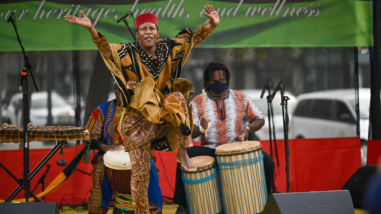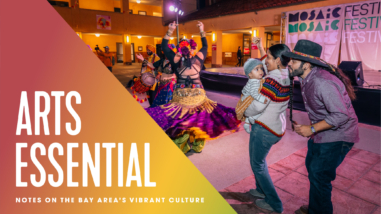Listening to arts advocates in Los Angeles
 Matías Muñoz-Rodriguez
Matías Muñoz-Rodriguez
This was a totally unexpected finding; we hadn’t realized that these two different kinds of Fellows were experiencing the program so differently.
We ended up bringing this back to the Fellows who participated in the survey and asked for ideas on what this kind of facilitated networking would look like. We got a lot of great suggestions on how to tackle this issue and will be implementing some of the strategies the Fellows suggested with the new cohort starting in September.
Karen: The feedback we got helped us realize that something as simple as seating arrangements can make a big difference. What happens when you put a teaching artist with a dynamic program is sitting next to an arts administrator looking to diversify their programming? While we are not necessarily making the collaboration happen, we are opening the door to the possibility of collaboration. Having realized this, we’re now working more intentionally to create an environment in our ACTIVATE sessions where those opportunities and collaborations can flourish.
Valerie: From our perspective, Arts for LA did a great job of getting solid feedback from members of their cohort and then segmenting that feedback for insights, which is what allowed them to see how different groups (e.g., those coming from a professional background versus community members) were experiencing the program. And how they could respond to their various needs.
Heath: Is the Arts for LA experience similar to what you’re seeing with direct-service organizations in the program, Valerie? Or are they really different?
Valerie: In terms of structure, their ACTIVATE program is very similar to other direct service organizations that may have “cohorts.”
Arts for LA did an especially great job of analyzing their results using simple but powerful tools and then processing the results with their constituents or clients (e.g., the Fellows) and involving them in developing solutions.
So, yes, they are an instructive example of how you can use feedback on the ground to shape a program and drive continuous improvement.
Karen: We are in position, too, where evaluation is so critical for that very point that the advocacy field is underdeveloped. Our ACTIVATE Program is one in which we are trying to change that by engaging our community members on every level to understand that they can take active part in the process.
Jessica: To have a truly effective advocacy field, you need both types of advocates. And, I would argue, that we need more of the community member advocates. Too often, professionals in the field are driving advocacy for the arts. ACTIVATE is important because it brings those groups together, and hopefully the two support each other in their learning.
Abril: Absolutely, and I think this particular example about the difference between those coming at advocacy in a professional capacity vs. from a community-based approach highlights the need for us (as a field) to more intentionally build those partnerships.
Heath: What advice would you give to an organization interested in applying for the new round of Listen for Good grants?
Karen: Be specific in need/project, and adaptive in the process itself. Having an anchor in ACTIVATE gave us an immediate working model, which was a win/win.
Valerie: I have heard some grantees say that you have to come prepared to learn or be surprised (in some cases) about the insights that will come. You think you know … but you don’t always.
Abril: I think it’s also important to be open to the possibility of unexpected results and the opportunities for growth and change that they might afford.
Valerie: Much more articulately said!
![]()
Abril: ![]()
Heath: Okay. Let’s leave it there. Thanks again to all of you for sharing your experience with us!




